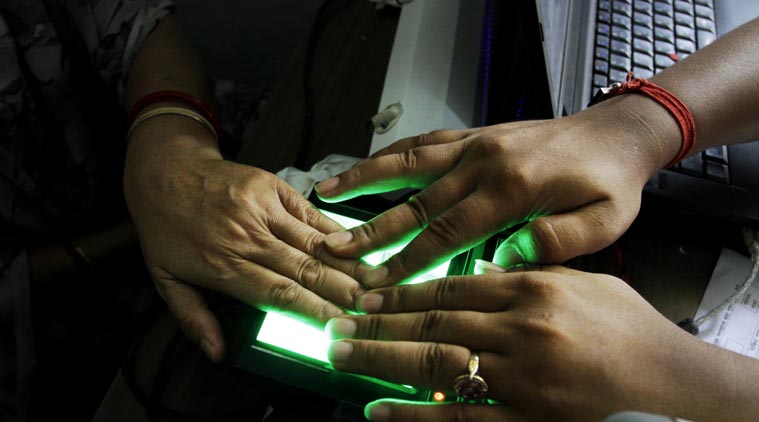Aadhaar verdict: Harbinger of uncertainty
Aadhaar verdict leaves open questions on what is permissible and what is not.

The final hearings on Aadhaar were the second longest in the Supreme Court’s history — after the Kesavananda Bharati verdict.
An optimist would say that the Supreme Court’s verdict on the constitutionality of the Aadhaar (Targeted Delivery of Financial and Other Subsidies, Benefits and Services) Act, 2016 (“Aadhaar Act”) and its use in various contexts has made everyone happy. It has struck down some provisions of the Act, while upholding the scheme and praising it for its intended use and benefits. It has limited Aadhaar’s use by the government in some contexts and the private sector in all contexts. It has changed the law on the scope of judicial review of money bills, but eventually upheld the Aadhaar Act as having been passed as a Money Bill.
A pessimist would say that the verdict has ensured that everyone is unhappy. The Centre suddenly finds the clause allowing access to Aadhaar data for “national security” purposes struck down as unconstitutional. Privacy advocates would be unhappy that the scheme continues in the form it does and its wide use for all manner of welfare and benefits upheld. Private parties which had built businesses around Aadhaar would be unhappy that their business models will have to be entirely re-thought. And apart from saying that the Aadhaar Act has been upheld as a money bill, the Court has not laid down the law on how to test other dubious Money Bills.
Between the half-full and half-empty perspectives, there is the cold reality that this judgment has upended the Aadhaar ecosystem and created far greater uncertainty — not just for citizens and private entities, but also for governments. In as much as the Court has sung praises of the Aadhaar scheme and its use in ensuring entitlements, it has left the field of what is permissible and impermissible for the government unclear. For instance, while the SC has upheld the linkage of the Aadhaar number to PAN under the Income Tax Act, it has held that Aadhaar cannot be mandated for bank accounts, insurance products, et al under the Prevention of Money-laundering (Maintenance of Records) (Second Amendment) Rules, 2017. What happens if the Centre were to simply mandate PAN (as it already has) for some of these products? The Court hasn’t adequately answered why an Aadhaar linked-PAN is less disproportionate than simply linking one’s Aadhaar number with a bank account.
Likewise, Section 57 which allowed Aadhaar to be used by private entities on the basis of a law or a contract has been struck down for being a violation of privacy. While this means that private entities cannot demand Aadhaar as a condition of contract or under law, does that mean that a private entity would be justified in refusing to accept Aadhaar as valid identity proof? Worse, the Court seems to contradict itself when it seems to conflate all the uses of Aadhaar only with eKYC authentication.
Perhaps the biggest fudge of the Court in the Aadhaar case relates to the money bill issue. While Justice D Y Chandrachud unambiguously (and rightly) holds that the Aadhaar Act could not have been passed as a Money Bill, the majority verdict splits the difference. The judgment is right in so far as it holds that the decision of the Speaker to certify a bill as a money is subject to judicial review, and is also right in setting aside past precedents that held to the contrary, it does conclude that the Aadhaar Act has been validly passed as a Money Bill. This conclusion is hinged almost entirely on Section 7 of the Act which links its use to welfare benefits paid out from the Consolidated Fund of India. This, however, does not take into account the structure of Article 110 (that defines a Money Bill).
A Money Bill is one which has only provisions related to finance and spending by the government. Incidental provisions are allowed in a money bill. But merely because one or two clauses in a Money Bill are in the nature of spending clauses, the bill does not per se become a Money Bill. The Court hasn’t explained in a principled manner as to why the Aadhaar Act is a Money Bill. Clever lawyers who wish to parse this judgment will be able to come up with equally contradictory findings on what is and what isn’t a money bill. There are challenges pending to the provisions regulating tribunals passed as a “Money Bill” and under the Court’s scrutiny. We might have to wait for judgment in that matter for a nuanced answer to this vexing question.
The final hearings on Aadhaar were the second longest in the Supreme Court’s history — after the Kesavananda Bharati verdict. What should have been expected perhaps was a definitive judgment that puts to rest all the legal and constitutional questions over Aadhaar, gives clarity to citizens and governments alike on the boundaries of the right to privacy, identity, welfare and dignity. We did not get that.
The writer is a senior resident fellow at the Vidhi Centre for Legal Policy, which assisted the Union Government in drafting the Aadhaar Act. Views are personal
For all the latest Opinion News, download Indian Express App
More From Alok Prasanna Kumar
- Rules for the courtMaking Supreme Court’s roster public is a welcome step. There is need for a mechanism to ensure consistency in case allocations..
- Court versus choiceIt’s a troubling question: Are courts in India becoming more ‘executive minded’ than the executive? ..
- Right to Privacy: Fundamental rights redefinedFrom seeing them as distinct compartments against which to test laws, to understanding them as a cumulative whole, to now seeing them as boundaries which…








































No hay comentarios:
Publicar un comentario